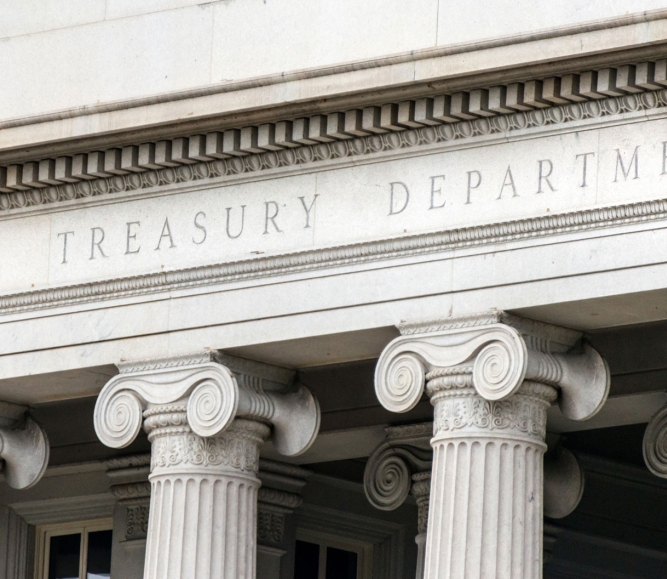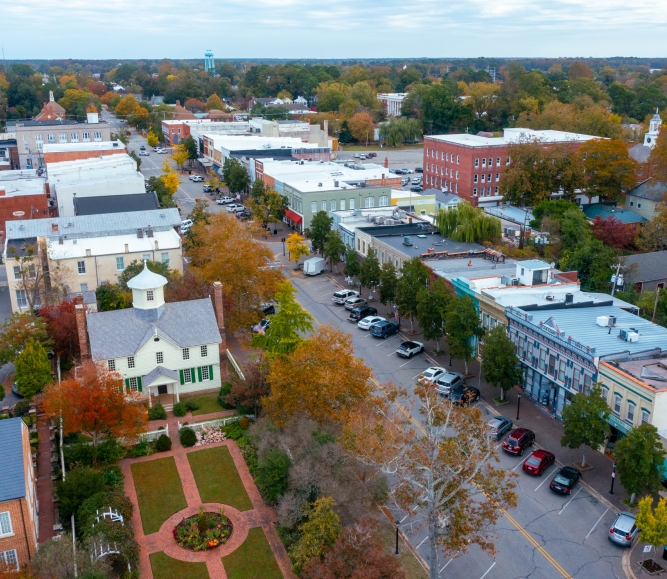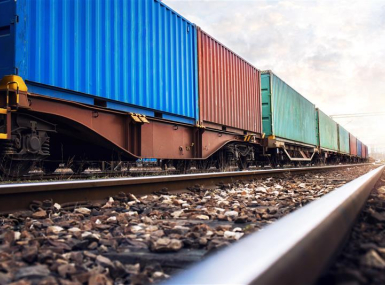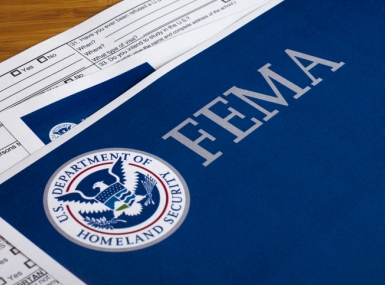NACo Analysis: Overview of New Treasury Guidance for ARPA Flexibility Legislation

Author

Eryn Hurley
Upcoming Events
Related News
On August 10, the U.S. Department of Treasury (Treasury) released an Interim Final Rule (IFR) for the bipartisan State, Local, Tribal, and Territorial Fiscal Recovery, Infrastructure, and Disaster Relief Flexibility Act (i.e. Cornyn/Padilla Amendment), which provides counties with the flexibility to invest the $65.1 billion that was allocated under the American Rescue Plan Act’s (ARPA) State and Local Fiscal Recovery Fund (SLFRF) in transportation and infrastructure, disaster relief and community development.
NACo successfully advocated for the inclusion of the Cornyn/Padilla amendment in the Fiscal Year 2023 Omnibus Package. Included below is an overview of the newly eligible uses under the IFR and how counties can use this new flexibility to support our residents and communities.
Key Highlights
- The Interim Final Rule (IFR) is not yet effective, but will likely be published in the Federal Register next week.
- The IFR provides counties with additional flexibility to invest the American Rescue Plan Act’s (ARPA) State and Local Fiscal Recovery Funds (SLFRF) in transportation and infrastructure projects, disaster relief and Community Development Block Grant (CDBG) program projects.
- The IFR does NOT alter existing eligible uses for SLFRF as outlined under the 2022 Final Rule.
- Counties may use ARPA funds for these newly eligible uses for costs incurred beginning December 29, 2022.
- Counties may use funds for mitigation activities to lessen or avert the threat of a natural disaster and its potential physical or negative economic impacts.
- Counties must still obligate funds, including newly eligible activities, by December 31, 2024.
- Counties must expand ARPA funds obligated to provide emergency relief from natural disasters by December 31, 2026.
- Counties must expend SLFRF funds obligated for Surface Transportation projects and CDBG projects by September 30, 2026.
- Counties can use SLFRF funds to satisfy the non-federal match requirement for certain surface transportation projects.
- Counties can use SLFRF funds for non-federal match for the non-federal share requirements of a federal financial assistance program in support of activities that would be eligible under the CDBG program.
Jump to Section
Jump to a section of the analysis or access additional resources, such as Treasury's overview of the Interim Final Rule.
Analysis Sections
Additional Resources
Webinar
National Membership Call: Overview of U.S. Treasury New Guidance for ARPA Flexibility
Join NACo for an overview of the U.S. Department of Treasury's Interim Final Rule and new eligible uses for the State, Local, Tribal, and Territorial Fiscal Recovery, Infrastructure, and Disaster Relief Flexibility Act.

Emergency Relief from Natural Disasters
Under the IFR, counties may use SLFRF funds to provide emergency relief from natural disasters or the negative economic effects of natural disasters. Within this eligible category, counties should pay particular attention to the eligible uses for emergency relief and mitigation activities, restriction on duplication of benefits and capital expenditure requirements.
If a county uses SLFRF funds for emergency relief from natural disasters, there is a two-step process the county must follow:
- Natural Disaster: Identify a natural disaster that has occurred OR is expected to occur imminently or a natural disaster that is threatened to occur in the future
- Emergency Relief: Identify emergency relief that responds to the physical or negative economic impacts, or potential physical/economic negative impacts, of the natural disaster – emergency relief must be related and reasonably proportional to the impact identified
WHAT QUALIFIES AS A NATURAL DISASTER?
The IFR defines a natural disaster as the following (must be attributable to natural causes and causes substantial damage, injury or imminent threat to property/persons):
- Hurricane
- Tornado
- Storm
- Flood
- High water
- Wind-driven water
- Tidal wave
- Tsunami
- Earthquake
- Volcanic eruption
- Landslide
- Mudslide
- Snowstorm
- Drought
- Fire
*May include another type of natural catastrophe attributable to natural causes
WHAT QUALIFIES AS EMERGENCY RELIEF?
The IFR defines emergency relief as assistance that is needed to save lives and protect property and public health and safety or to lessen or avert the threat of catastrophe. The assistance must be related and reasonably proportional to the physical or negative economic impacts of the natural disaster that has occurred or the impacts that will occur in a future natural disaster.
In order to provide emergency relief, a county must identify that the natural disaster meets Treasury’s definition listed above and an emergency declaration or designation from the following:
- An emergency declaration pursuant to the Robert T. Stafford Disaster Relief and Emergency Assistance Act
- An emergency declaration by the Governor of a state pursuant to respective state law
- A designation of an event of a natural disaster by the chief executive (or equivalent) of a recipient government if the chief executive documents the event satisfies the definition of natural disaster provided above
ELIGIBLE USES
Treasury identifies eligible uses for emergency relief provided from a declared or designated natural disaster that has occurred or is expected to occur imminently AND emergency relief (i.e. mitigation activities) provided from the threat of a future natural disaster.
Declared or Designated Natural Disasters
The IFR identifies a non-exhaustive list of eligible emergency relief uses including, but not limited to:
- Temporary housing
- Food assistance
- Debris removal
- Public infrastructure repair
- Increased operational costs
- Cash assistance for uninsured or underinsured disaster-caused expenses
- Cash assistance for low-income households
- Home repairs for primary residences not covered by insurance that have become uninhabitable
In addition to the above, counties can use SLFRF funds for emergency protective measures, including:
- Transportation and pre-positioning equipment and resources
- Flood fighting
- Firefighting
- Supplies and commodities
- Medical care and transport
- Evacuation and sheltering
- Childcare
- Demolition of structures
- Search and rescue to locate survivors, household pets and service animals
- Use or lease of temporary generators for facilities that provide essential community services
- Dissemination of information to the public to provide warnings and guidance about health and safety hazards
- Searching to locate and recover human remains
- Storage and interment of unidentified human remains
- Mass mortuary services
- Construction of emergency berms or temporary levees to provide protection from floodwaters or landslides
- Emergency repairs necessary to prevent further damages
- Buttressing, shoring or bracing facilities to stabilize them or prevent collapse
- Emergency slope stabilization
- Mold remediation
- Extracting water and clearing mud, silt, or other accumulated debris
- Taking actions to save the lives of animals
- Snow removal
Threat of Future Natural Disasters
Under the IFR, mitigation activities to lessen or avert the threat of natural disaster and its potential physical or negative economic impacts are eligible. Mitigation activities may be stand-alone projects or incorporated into repair or reconstruction projects that address the impacts of a natural disaster. Specific eligible uses include:
- Structure elevation
- Mitigation reconstruction
- Dry flood proofing
- Structural retrofitting
- Non-structure retrofitting
- Wind retrofit
- Infrastructure retrofit
Duplication of Benefits
In general, the IFR does not allow for the provision of financial assistance to an individual or business if they will receive assistance from another program or from insurance. Assistance may be provided if the individual or business has not received the other benefits by the time of application for SLFRF funds and they agree to repay any duplicative assistance. These funds may be used for any portion of disaster assistance not covered by other benefits.
Surface Transportation Projects & CDBG Projects
Under the IFR, counties can use SLFRF funds for Surface Transportation projects and CDBG projects. For project under these eligible use categories, there are several requirements that counties must comply with, including:
- Limitation on SLFRF contribution towards Surface Transportation and CDBG projects: The total amount of SLFRF funds that a county may use for Surface Transportation projects and CDBG projects, combined, cannot exceed the greater of $10 million and 30 percent of a county’s SLFRF allocation.
- Supplanting funds: Counties using SLFRF funds for Surface Transportation and CDBG projects must supplement, not supplant, other federal, state territorial, Tribal and other local government funds otherwise available for such uses.
- Compliance with existing laws: Unless otherwise noted by Treasury, all SLFRF funds for Surface Transportation and CDBG projects are subject to certain other laws, including requirements under the National Environmental Policy Act (NEPA).
- Obligation and expenditure deadline: Counties using SLFRF funds for Surface Transportation and CDBG projects must obligate funds by December 31, 2024 and expend funds by September 30, 2026.
Surface Transportation Projects
Counties can use SLFRF funds for Surface Transportation projects in three primary ways:
- Supplementing surface transportation projects receiving funding from the U.S. Department of Transportation (USDOT) (Pathway One)
- Funding Surface Transportation projects that are not receive funding from USDOT and are funded with SLFRF (Pathway Two)
- Satisfying the non-federal match requirements for certain Surface Transportation projects or repaying a loan provided under the TIFIA program (Pathway Three)
Pathway One: Surface Transportation Projects Receiving Funds from USDOT
Under the IFR, Pathway One Projects are subject to USDOT’s oversight and counties MUST consult with USDOT before using SLFRF funds for a Pathway One Project. Under Pathway One, counties may do the following for any project receiving funding from USDOT:
- Expand an existing project
- Cover unexpected costs of an existing project
- Expand the scope of a project, cover additional costs or in other ways supplement USDOT funding for projects that have not yet, but will receive funding from USDOT by December 31, 2024
Pathway One eligible projects include the following:
- INFRA Grants
- National Highway Performance Program
- Bridge Investment Program
- Surface Transportation Block Grant Program
- Highway Safety Improvement Program
- Congestion Mitigation and Air Quality Improvement Program
- Charging and Fueling Infrastructure Discretionary Grant Program
- Territorial and Puerto Rico Highway Program
- National Highway Freight Program
- Rural Surface Transportation Grant Program
- Carbon Reduction Program
- Promoting Resilient Operations for Transformative, Efficient, and Cost-Saving Transportation Program
- Tribal Transportation Program
- Federal Lands Transportation Program
- Federal Lands Access Program
- Rebuilding American Infrastructure with Sustainability and Equity Grant Program
- Transportation Infrastructure Finance and Innovation Act Program
- Urbanized Formula Grants
- Fixed Guideway Capital Investment Grant Formula Grants for Rural Areas
- State of Good Repair Grants
- Grants for Buses and Bus Facilities
- National Culvert Removal, Replacement, and Restoration Grant Program
- Bridge Replacement, Rehabilitation, Preservation, Protection, and Construction Program
- Activities to carry out metropolitan transportation planning
- Projects that further the completion of a designated route of the Appalachian Development Highway System
Pathway Two: Surface Transportation Projects Not Receiving Funds from USDOT
Under the IFR, Pathway Two Projects will be administered by Treasury. There are two categories of projects identified by Treasury under Pathway Two – projects under the Streamlined Framework and projects outside the Streamlined Framework Approach.
Projects Under the Streamlined Framework
Counties may use SLFRF funds for projects that are not receiving funding from USDOT to implement a project that would be eligible under the RAISE grant program and meets the following criteria:
- Contributes no more than $10 million SLFRF funding to a Pathway Two project: If a project is above $10 million, a county may choose to fund multiple $10 million projects, allocate funds towards CDBG projects or another eligible use category
- Does not have a significant environmental impact: projects must meet the criteria outlined under 23 C.F.R. 771.116(c)(1)-(22), 771.117(c)(1)-(30), and 771.118(c)(1)-(16).
Projects Outside of the Streamlined Framework
If a county want to fund a Surface Transportation project outside the parameters of the Streamlined Approach, it must submit a Notice of Intent to Treasury. The Notice of Intent must be submitted to NOE-SLFRF@treasury.gov and is due 30 calendar days after the end of the IFR comment period. Treasury will evaluate the project included in the Notice of Intent.
Pathway Three: Satisfying the Non-Federal Match Requirements for Certain Surface Transportation Projects
Under the IFR, counties can use SLFRF funds to pay a TIFIA loan or to satisfy the non-federal match requirements for eligible projects under the following programs:
- INFRA Grants
- Fixed Guideway Capital Investment Grants
- Mega Grants
- Projects eligible for credit assistance under the TIFIA program
Prior to using SLFRF funds to satisfy the non-federal match requirement for the above programs, counties must consult with USDOT to understand the applicable non-federal cost share requirements and how SLFRF funds can be used.
CDBG Projects
Under the IFR, counties may use SLFRF funds for Title I projects, which are activities that are eligible under the Community Development Block Grant (CBDG) and Indian Community Development Block Grant (ICDBG) programs. Treasury is not delegating authority to the U.S. Department of Housing and Urban Development (HUD) to oversee these projects, and therefore, counties should report projects only to Treasury.
Under the IFR, counties may use SLFRF funds for eligible CDBG projects and activities including:
- Acquisition of certain real property for a public purpose, subject to certain limitations
- Disposition of certain property, subject to certain limitations and rules
- Acquisition, construction, reconstruction, rehabilitation, or installation of public facilities and improvements, clearance and remediation activities
- Public services, subject to the limitation discussed in next box
- Interim assistance where immediate action is required for certain activities such as street repair, and costs to complete an urban renewal project under Title I
- Relocation payments for relocated families, businesses, nonprofit organizations, and farm operations, under certain conditions
- Payments to housing owners for loss of certain rental income
- Certain housing services
- Acquisition, construction, reconstruction, rehabilitation, or installation of privately owned utilities
- Rehabilitation and reconstruction of housing, conversion of structures to housing, or construction of certain housing
- Homeownership assistance
- Technical assistance to entities to increase capacity to carry out CDBG-eligible projects
- Assistance to certain institutions of higher education to carry out eligible activities
- Administration activities including general management, oversight, and coordination costs, fair housing activities, indirect costs, and submission of applications for federal programs
- Planning activities including the development of plans and studies, policy planning, management and capacity building activities
- Satisfying the non-federal share requirements of a federal financial assistance program in support of activities that would be eligible under the CDBG and ICDBG programs
In addition to eligible activities, the IFR also outlines ineligible activities. While the below activities are ineligible under this specific category, they may still be eligible under other SLFRF eligible use categories.
Ineligible CDBG activities:
- Buildings or portions thereof, used for the general conduct of government
- General government expenses
- Political activities
- Purchase of equipment
- Operating and maintenance expenses
- New housing construction
- Income payments
The IFR also outlines that counties must comply with other program requirements, including:
- Title I program requirements
- Primary Objective and CDBG National Objectives
- Program requirements of the CDBG Entitlement Grants program (when applicable)
Counties must also comply with the additional following requirements that apply to the total amount of SLFRF funds used towards CDBG projects, including:
- Primary Objective: Counties must direct at least 70 percent of SLRF funds used for Title 1 projects to projects that principally benefit low- and moderate-income individuals
- Public Services Cap: Not more than 15 percent of SLFRF funds used or Title I projects may be spend under the “public services” category of eligible activities
- Planning and Administrative Costs Cap: Not more than 20 percent of SLFRF funds used for Title I projects may be spent on planning and administrative costs
- BEAD Program Requirements: Requirements of the BEAD program apply as outlined under the Bipartisan Infrastructure Law
- CDBG National Objectives: All projects executed by counties must comply with the National Objective
- Labor Standards Requirements: Prevailing wage rate requirements in accordance with the Davis-Bacon Act and other labor standard applied by HUD.
Dive Deep on ARPA
American Rescue Plan Resource Center
In this resource center, find stories of counties investing these resource to support our residents, technical assistance in implementing these programs in your county and our latest analysis and research.






